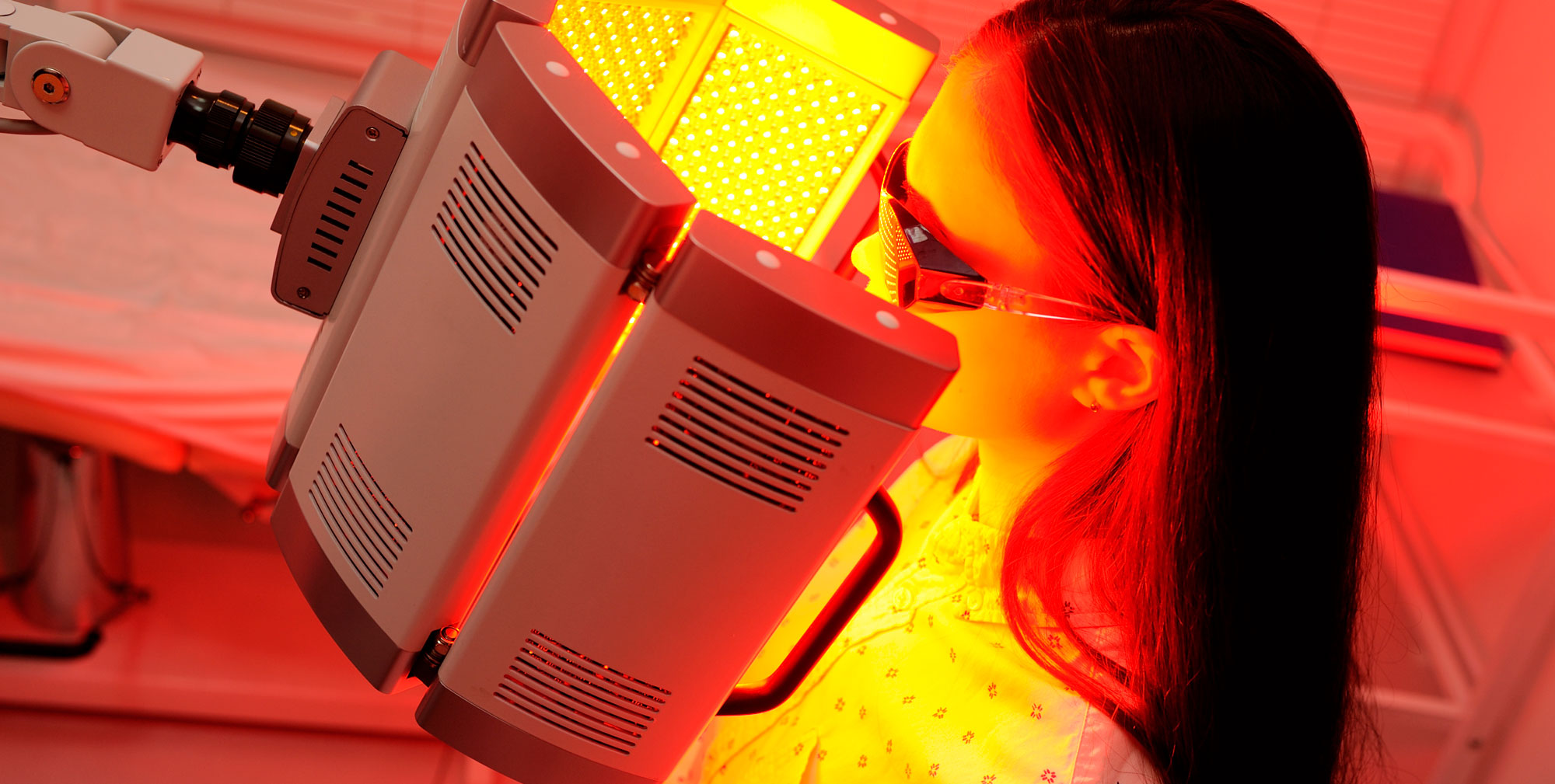
Photodynamic Therapy (PDT)
Photodynamic therapy (PDT) is a well-evidenced treatment, available to address sun damage (solar keratoses) and some shallow skin cancers (IECs and superficial BCCs). One to two treatments are required, depending on your individual case. A cream is applied to your skin, before being activated by a bright light. The activated agent selectively destroys only the skin cancer cells. PDT can produce excellent cosmetic improvements, as well as removing the problem cells.
How is the treatment performed?
The area to be treated is confirmed with you by your doctor, and then numbed, if required. Any scaly areas will be scraped away, to ensure the cream can absorb. Once applied, the cream is then allowed to absorb. Two types of cream are used, depending on your case. ALA cream takes 30 minutes to absorb, while MAL cream requires two hours.
The cream is then activated by a bright light (blue light for ALA, red light for MAL cream), for approximately ten minutes. This is uncomfortable; however, a cooling fan and spray, as well as local anaesthetic, can be provided to reduce any discomfort. Paracetamol can be taken at home prior to your appointment, to further assist.
Sun exposure must be avoided on the day of treatment, and four 48 hours following treatment. Sun exposure causes excessive reactions to the treatment.
How well does PDT work? How many treatments will I need?
Approximately 80% of actinic keratoses clear with one episode of PDT.
Approximately 80% of IECs (intraepithelial carcinomas/Bowen's disease) clear with two episodes of PDT.
Only parts of your face are treated at any one time. For a number of reasons, it is not practical to treat your entire face in one episode. Multiple episodes of treatment may therefore be required.
The nature of sun damage dictates that you may well require repeated episodes of PDT in the future, to areas that have been treated previously.
How should I care for my skin after treatment?
You should apply ice packs (wrapped in a Chux cloth or clean teatowel) for 10 minutes every hour for the first day. This helps with discomfort and swelling.
You must avoid the sun COMPLETELY for at least 48 hours following treatment. You need to go directly home from the clinic, wearing a broad-brimmed hat, and not go outside again for at least 2 days. The curtains should be drawn at home during this time, to absolutely minimise your exposure to sunlight.
For the first 3 - 4 days after treatment, perform the following regimen 4 times daily:
- Make up a bowl of cooled salty water (1 teaspoon of salt in a bowl)
- Dip a clean Chux in the bowl, and then let the Chux lie on your skin for 10 minutes. It’s often easiest to do this lying down, with a couple of towels under your head to catch drips.
- After 10 minutes, use the Chux to gently wipe away any softened crust from your face.
- Then apply a thick layer of Vaseline. Use a clean teaspoon to scoop the Vaseline from the tub onto your hand, rather than
Following treatment
Following treatment, your skin will be red and inflamed. This is easily managed with salt water bathing and gentle moisturisers. Allow at least three days off work, up to a week if you have a public-facing role. This ‘down-time’ is fortunately significantly less than with other treatments for solar keratoses (sun damage).